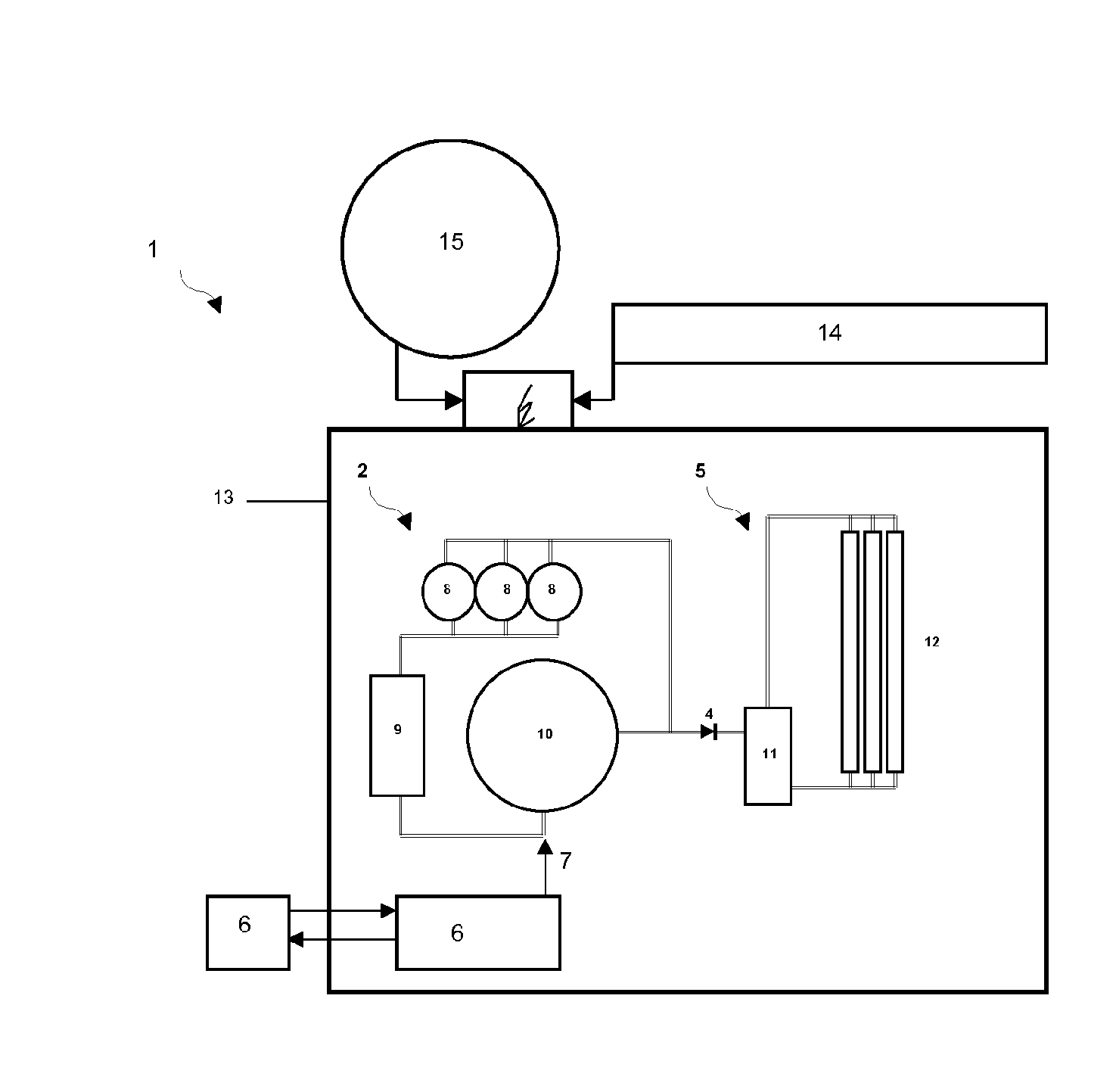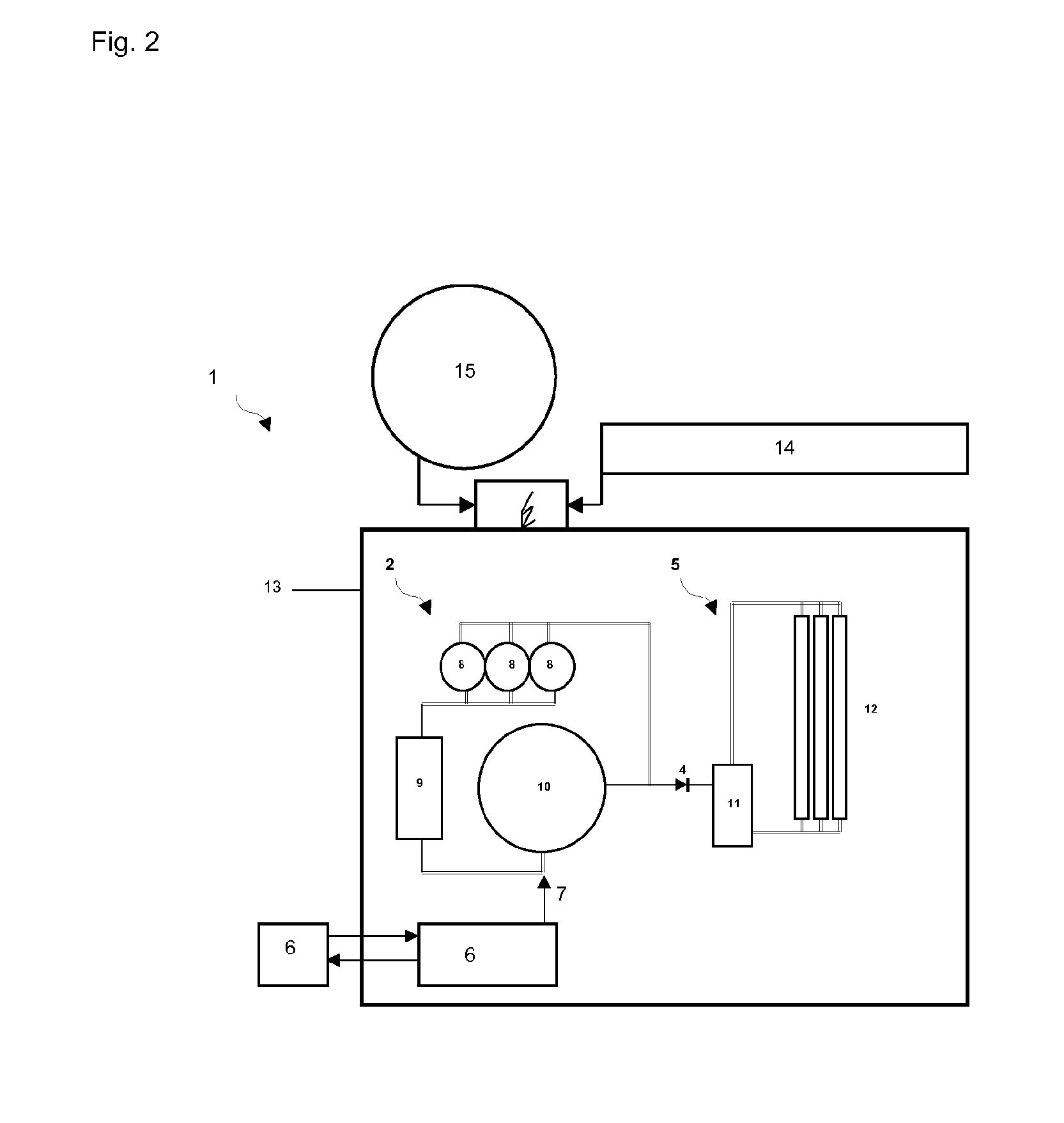Aquaponic system for vegetable and fish production
a vegetable and fish technology, applied in pisciculture and aquaria, agriculture gas emission reduction, gas production bioreactors, etc., can solve the problems of increasing the cost of such systems, eutrophicating and even hypertrophicating existing natural bodies of water, and high water consumption of such systems
- Summary
- Abstract
- Description
- Claims
- Application Information
AI Technical Summary
Benefits of technology
Problems solved by technology
Method used
Image
Examples
Embodiment Construction
[0039]FIG. 1 shows an exemplary embodiment of an aquaponic facility 1 according to the invention. The aquaponic facility 1 includes an aquaculture unit 2 which is connected with a hydroponic unit 5 via a water outlet 3 having a one-way valve 4. The hydroponic unit 5 includes a cold trap 6 which is connected with the aquaculture unit 2 by way of a return flow 7. The used from the aquaculture unit 2 is supplied via the water outlet 3 through the one-way valve 4 to the hydroponic unit 5, where the water including the nitrates and other nutrients is absorbed by the plants. The plants release the water in form of plant transpiration again into the ambient air of the hydroponic unit 5. This water is condensed from the ambient air by the cold trap 6 and collected. The treated water is then returned from the cold trap 6 to the aquaculture unit 2 via the return flow 7. This closes the water circulation loop.
[0040]FIG. 2 shows another exemplary embodiment of an aquaponic facility according to...
PUM
 Login to View More
Login to View More Abstract
Description
Claims
Application Information
 Login to View More
Login to View More - R&D
- Intellectual Property
- Life Sciences
- Materials
- Tech Scout
- Unparalleled Data Quality
- Higher Quality Content
- 60% Fewer Hallucinations
Browse by: Latest US Patents, China's latest patents, Technical Efficacy Thesaurus, Application Domain, Technology Topic, Popular Technical Reports.
© 2025 PatSnap. All rights reserved.Legal|Privacy policy|Modern Slavery Act Transparency Statement|Sitemap|About US| Contact US: help@patsnap.com



